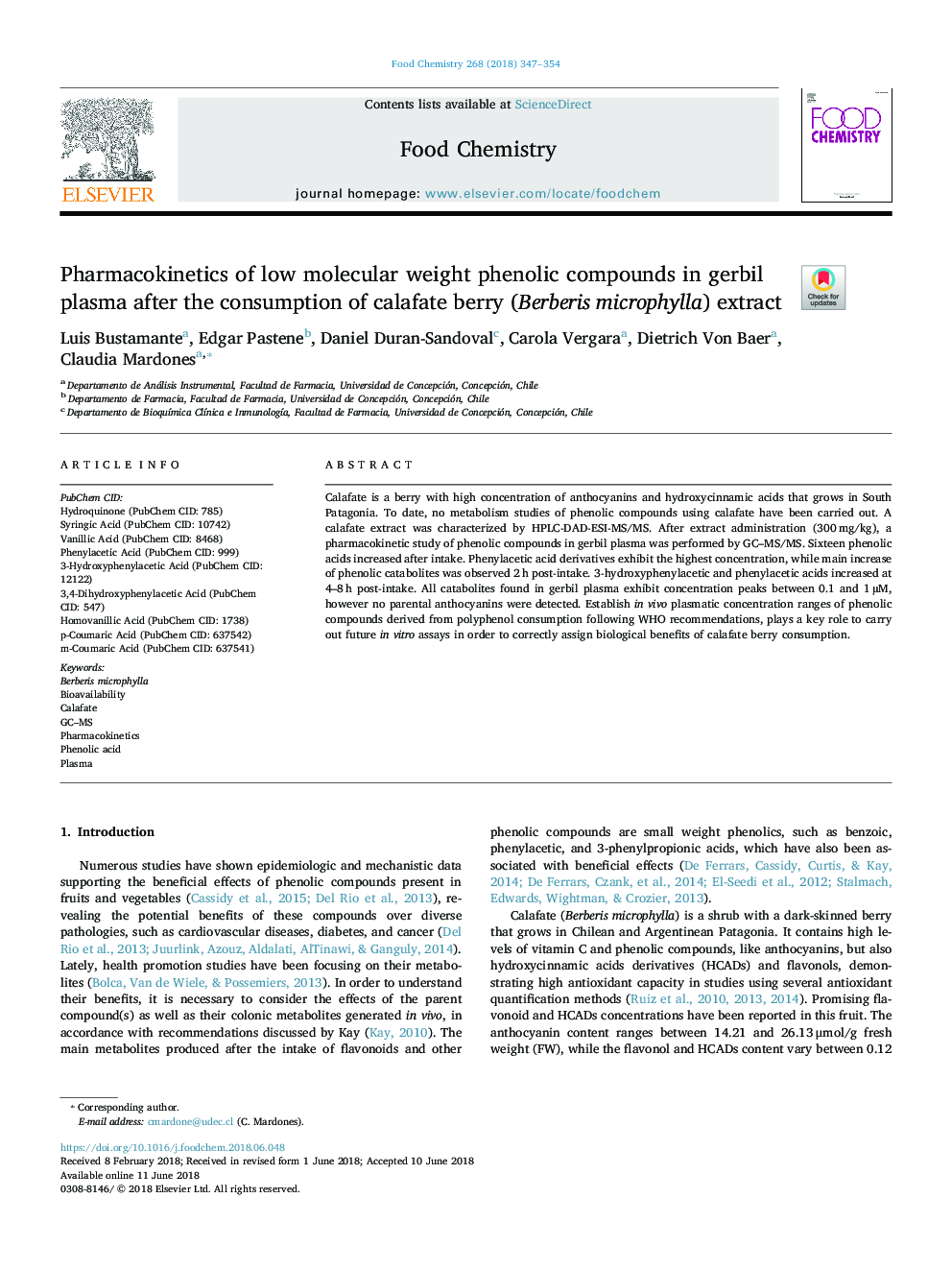| Article ID | Journal | Published Year | Pages | File Type |
|---|---|---|---|---|
| 7584374 | Food Chemistry | 2018 | 8 Pages |
Abstract
Calafate is a berry with high concentration of anthocyanins and hydroxycinnamic acids that grows in South Patagonia. To date, no metabolism studies of phenolic compounds using calafate have been carried out. A calafate extract was characterized by HPLC-DAD-ESI-MS/MS. After extract administration (300â¯mg/kg), a pharmacokinetic study of phenolic compounds in gerbil plasma was performed by GC-MS/MS. Sixteen phenolic acids increased after intake. Phenylacetic acid derivatives exhibit the highest concentration, while main increase of phenolic catabolites was observed 2â¯h post-intake. 3-hydroxyphenylacetic and phenylacetic acids increased at 4-8â¯h post-intake. All catabolites found in gerbil plasma exhibit concentration peaks between 0.1 and 1â¯ÂµM, however no parental anthocyanins were detected. Establish in vivo plasmatic concentration ranges of phenolic compounds derived from polyphenol consumption following WHO recommendations, plays a key role to carry out future in vitro assays in order to correctly assign biological benefits of calafate berry consumption.
Keywords
Related Topics
Physical Sciences and Engineering
Chemistry
Analytical Chemistry
Authors
Luis Bustamante, Edgar Pastene, Daniel Duran-Sandoval, Carola Vergara, Dietrich Von Baer, Claudia Mardones,
